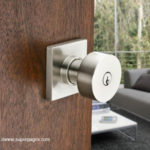Most homeowners are confident they are giving their trees the best care to thrive and stay healthy. Water, fertilizer, and mulch right on schedule.
However, tree branch trimming can be very intimidating to the average person. While big pruning tasks should be left to the professionals, pruning small trees and branches is perfectly safe and manageable for the average person.
First, know when DIY tree trimming is appropriate, and when it’s not. If you want to prune a small tree that has lightweight branches, go for it. However, think twice about pruning a tree that’s near a power line, large branches overhanging your roof, or if the branches are too heavy for you to easily handle.
If you’ve decided to go ahead, just start with a little DIY tree branch trimming. First, you’ll need to understand the parts of the tree and branch. The branch collar is the enlarged area at the base of the branch that connects it to the tree. The branch bark ridge is between the tree trunk and the branch; it’s raised a little higher than the branch.
Make sure your pruning tools are clean and sharp. Make a cut on the far side the branch collar; don’t cut the branch collar itself but make the cut close enough not to leave a nub.
For a thin branch, one inch or less in diameter, cut just above the branch collar at a 45-degree angle to the bark ridge.
For a thick branch, cut it in three sections. First, cut through the branch halfway, about a foot up from the branch collar. Next, cut a few inches beyond that cut, letting the top of the branch fall to the ground. Finally, make the last cut just above the branch collar.
Trimming the Whole Tree
When trimming a tree, the procedure for trimming the branches is the same, but there are other factors that need to be considered.
First, you’ll need to plan out the branches you want to keep, and the ones that need to be cut. You shouldn’t cut more than 25% of a tree’s branches at one time. Imagine your tree’s branches like a clock; keep the branches at a 2 o’clock or 10 o’clock and trim any branches growing at odd angles. Also, remove any branches growing crosswise into the inside of the tree.
Cut off growth coming from the base of the trunk or the roots, and prune away any dead branches. Trim away any stringy looking weak branches growing upright in clusters.
How Tree Trimming Gone Wrong can Kill Your Tree
While one bad cut won’t kill your tree, regular bad pruning can.
If you repeatedly cut off too many branches at one time, it will weaken your tree. Your tree can even die from stress. That’s the reason why you should never trim off more than 25% of your tree’s branches at any one time.
Likewise, cutting into the branch collar can be a big mistake. The branch collar will help the tree’s wound heal properly, sealing it with sap. But if you cut into the branch collar, the tree’s wound may get infected with a fungus that could spread throughout the tree, killing it.
Finally, trimming off the top of a tree could leave it weak, with an ugly and unnatural appearance. Strive to follow the simple rules above, for a healthy and natural-looking tree.







